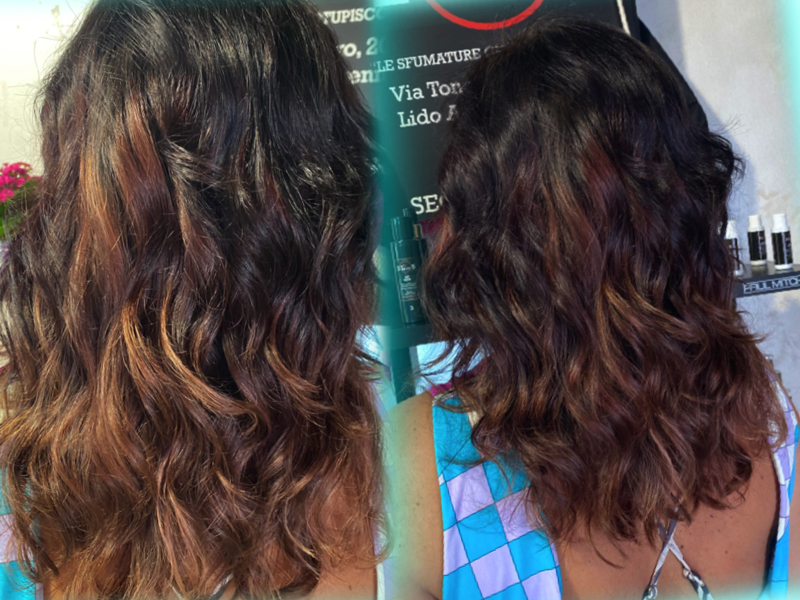Hair loss affects millions of people worldwide, impacting confidence, self-image, and emotional well-being. While it’s often thought of as a cosmetic issue, the reality is that hair loss can signal underlying health concerns or lifestyle factors that need attention. With the right approach, many forms of hair loss can be managed, or even reversed, but finding an effective solution starts with understanding the type of hair loss you’re dealing with.
Different forms of hair loss have different causes, progression patterns, and treatment options. By identifying the specific type, you can take targeted steps to address it rather than wasting time and money on ineffective remedies. The process begins with education and the willingness to look beyond quick fixes toward sustainable solutions.

Distinguishing Between Common Hair Loss Types
There are multiple types of hair loss, each with distinct characteristics. Androgenetic alopecia, more commonly known as male or female pattern baldness, is the most prevalent form, typically resulting from genetic and hormonal factors. It often presents as a receding hairline, thinning crown, or reduction in hair density.
Alopecia areata is an autoimmune condition where the body’s immune system mistakenly attacks hair follicles, leading to patchy bald spots on the scalp or other areas of the body. In some cases, the hair may regrow on its own, while in others, medical intervention is necessary.
Other types include telogen effluvium, a temporary shedding often triggered by stress, illness, medication, or hormonal changes, and traction alopecia, caused by consistent tension on hair from tight hairstyles like braids, ponytails, or extensions. Scarring alopecia, although less common, involves permanent follicle damage due to inflammation, burns, or certain skin conditions. Recognising the differences in cause and presentation is the first step in selecting an appropriate treatment plan.
Linking Causes to Solutions
Androgenetic alopecia, for example, responds better to medications like minoxidil, finasteride, or low-level laser therapy, whereas traction alopecia often improves simply by altering hair care practices and avoiding excessive tension. While it’s easy to lump all hair loss together, the truth is that effective treatment depends on understanding the different causes of hair loss and how they influence hair growth cycles. Alopecia areata may require corticosteroid injections, topical immunotherapy, or other immune-modulating treatments.
Telogen effluvium, on the other hand, often resolves naturally once the underlying stressor, such as nutritional deficiencies, postpartum hormonal shifts, or illness, is addressed. Without pinpointing the cause, there’s a risk of using treatments that may be ineffective and could exacerbate the problem.
Knowing the origin of the hair loss allows individuals and professionals to create a targeted, cost-effective plan rather than wasting resources on trial-and-error approaches that yield poor results.
The Role of Professional Diagnosis
Self-diagnosing hair loss can be tricky, as different conditions often share similar symptoms, such as thinning, shedding, or patchy bald spots. Consulting a dermatologist, trichologist, or qualified healthcare provider is the most reliable way to get an accurate diagnosis.
A professional may recommend tests such as scalp biopsies, blood work, or dermoscopy to evaluate follicle health and determine the exact type of hair loss. These evaluations can reveal contributing factors like iron deficiency, hormonal imbalances, or autoimmune activity. Once the diagnosis is confirmed, a personalised treatment plan can be developed, addressing both the symptoms and the root causes.
This step is vital for effective treatment and for identifying underlying medical issues that may require separate care, such as thyroid disorders or autoimmune diseases.
Lifestyle Factors That Influence Hair Health
Not all hair loss stems from medical conditions; lifestyle habits can significantly impact the health and strength of your hair. Poor nutrition, high stress, and inadequate sleep can weaken hair follicles and disrupt normal growth patterns. Diets lacking essential nutrients like protein, iron, zinc, and vitamins such as biotin and vitamin D can contribute to thinning hair or increased shedding.
Stress management plays a big role as well. Techniques like yoga, meditation, and physical activity help regulate hormones and reduce the likelihood of stress-related shedding. Avoiding excessive heat styling, harsh chemical treatments, and tight hairstyles preserves the integrity of the hair shaft and reduces follicle strain.

Medical Conditions and Hair Loss
Hair loss can sometimes be a symptom of a broader health issue. Conditions like thyroid disease, lupus, anaemia, and polycystic ovary syndrome (PCOS) can all contribute to hair thinning or loss. Certain medications, including those for cancer treatment, depression, and high blood pressure, may list hair loss as a side effect.
Addressing the underlying medical condition is often key to stopping or reversing the hair loss. For example, regulating thyroid hormone levels or correcting iron deficiency can lead to significant improvements in hair density. In these cases, hair loss is a signpost pointing toward a health problem that needs prompt treatment.
Exploring Treatment Options
Once the type and cause of hair loss have been identified, treatment can be tailored to the individual. Medical options include topical treatments like minoxidil, oral medications such as finasteride or spironolactone, and corticosteroid injections for certain autoimmune-related types. Non-invasive methods like low-level laser therapy or platelet-rich plasma (PRP) treatments are gaining popularity for their potential to stimulate regrowth.
For those with advanced or permanent hair loss, surgical hair restoration procedures like follicular unit transplantation (FUT) or follicular unit extraction (FUE) can provide long-term solutions..
It’s important to remember that hair regrowth takes time. Consistent application of treatments and realistic expectations are key, as visible results may take several months to appear. Working closely with a specialist ensures that adjustments can be made to the plan as needed for optimal results.
Preventing Future Hair Loss
Even after addressing current hair loss, prevention should remain a priority to protect long-term hair health. This means maintaining a nutrient-rich diet, managing stress levels, and practising gentle hair care. For those with a genetic predisposition to conditions like androgenetic alopecia, early intervention with preventive treatments may help slow progression.
Regular check-ups with a healthcare provider or trichologist allow for ongoing monitoring, making it easier to detect changes early and take proactive measures. Protecting the scalp from excessive sun exposure and avoiding unnecessary chemical or mechanical damage are important in preserving follicle strength.
Knowledge truly is power. By understanding the type of hair loss you’re experiencing, you can make informed decisions, select effective treatments, and take preventive steps that keep your hair healthier for longer.
The journey to healthier hair is as much about patience and consistency as it is about science and strategy. With the right information, expert guidance, and commitment to care, it’s possible to restore confidence, not just in your appearance, but in your well-being.

Monica Costa founded London Mums in September 2006 after her son Diego’s birth together with a group of mothers who felt the need of meeting up regularly to share the challenges and joys of motherhood in metropolitan and multicultural London. London Mums is the FREE and independent peer support group for mums and mumpreneurs based in London https://www.londonmumsmagazine.com and you can connect on Twitter @londonmums


